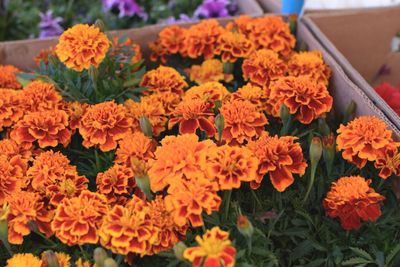Common Zone 8 Annual Flowers
Zone 8 is defined by a common low winter temperature, so there is a lot of variation in rainfall and summer high temperatures. The zone extends along the west coast of the U.S., through parts of the southwest, across much of Texas, through the southeast, and into North Carolina. This is a great zone for growing flowers, and there are plenty common zone 8 annuals to choose from. Since there are so many, listed here are six of the most common annual flowers recommended for zone 8 gardens: Begonia – Begonias are great annuals because they are attractive and thrive and bloom from spring through the first frosts. You can find a variety of colors, not just in the flowers but also the foliage. Just avoid tuberous begonia, which does better in colder zones. Chrysanthemum – Chrysanthemum are technically perennials but are usually used as annuals because they are sensitive to winter cold. They will give you a big range of colors and are a great choice for cut flowers. Cosmos – Cosmos are pretty flowers with wispy, delicate foliage and are among the easiest annuals to grow. Colors include yellow, pink, white, and red. They can grow very tall and make good screens. Ornamental Peppers – Not all annuals are cultivated for their flowers. Varieties of ornamental peppers make great annuals that produce bright, small peppers. Colors of the peppers may be yellow, orange, red, or even deep purple to black. They can be very spicy though, so they are generally used for show, not for cooking. Zinnia – Zinnias are bright, showy flowers and they tend to spread, so choose this annual for a pretty groundcover. They thrive in heat and sun but need plenty of water. Marigold – Marigolds are common zone 8 annuals because of their beautiful rich shades of gold, orange, and red. African marigolds have larger blooms than French marigolds. These annuals are easy to grow.
Growing Annuals in Zone 8
Growing annuals is generally very easy but follow a few good practices to be sure they thrive all summer. Prepare your bed before planting by stirring up the soil and amending if necessary. Add perlite or sand if your soil is heavy, for instance. Transplanting is the easiest way to grow annuals. Place your transplants at even spaces, as recommended by your nursery, and do so only after the last frost. Watering is important for annuals. When it is not raining, watering every day is the best strategy. You don’t need to use fertilizer if you have rich soil, but many gardeners use a bloom booster when watering to ensure the plants produce plenty of flowers. Annuals for zone 8 are plentiful, easy to grow, and rewarding to enjoy in the garden.
